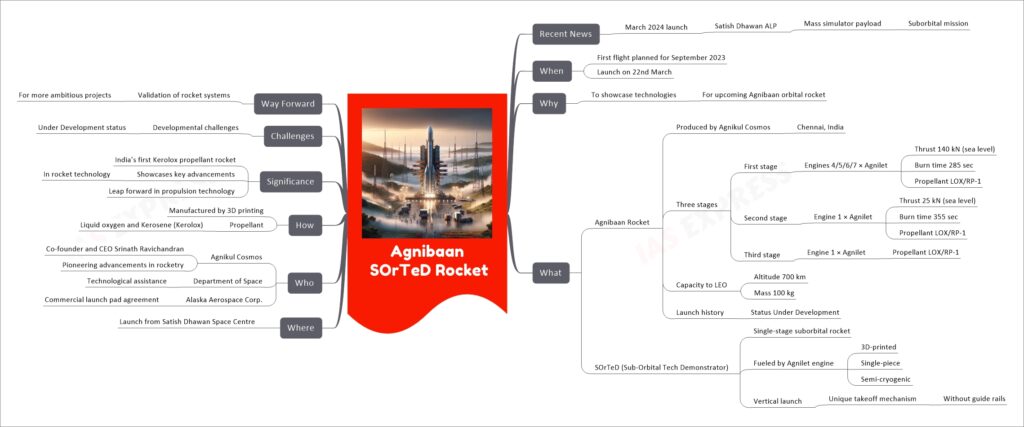Agnibaan SOrTeD Rocket

The Agnibaan SOrTeD Rocket is an innovative project under development by Agnikul Cosmos, a space startup based in Chennai, India. The Agnibaan rocket, with its three stages, is designed to place satellites into low Earth orbit, showcasing India’s growing capabilities in space technology. The SOrTeD (Sub-Orbital Tech Demonstrator), specifically, is a single-stage suborbital rocket intended to demonstrate the technologies that will be used in the Agnibaan orbital rocket. A notable aspect of this initiative is the use of 3D printing technology for manufacturing the entire rocket, including its Agnilet engine, a single-piece, semi-cryogenic engine fueled by a mixture of liquid oxygen and kerosene. The planned launch from the Satish Dhawan Space Centre marks a significant milestone, not only as India’s first rocket to utilize Kerolox propellant but also for its innovative vertical launch mechanism that eschews traditional guide rails. This project represents a leap forward in propulsion technology and has the potential to significantly impact India’s capabilities in space exploration and satellite deployment.
If you like this post, please share your feedback in the comments section below so that we will upload more posts like this.

